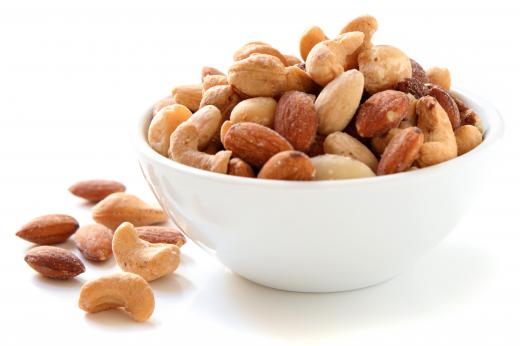Cashew nut processing prepares the cashew nut for consumption. In its most basic form, cashew nut processing involves the removal of the cashew shell from the meaty nut, washing the nut to rid it of any foreign matter, then soaking and roasting it. Once this process is completed, the cashew nuts are ready to be eaten.
Traditionally, cashew nut processing was completed manually in small batches. Cashew nut shells would be carefully cracked with hammers to avoid breaking the nut inside as whole nuts hold a higher market value than broken nuts. The nuts would be cleaned with water before being left to soak in tubs. After draining, the nuts would be left to stand for several hours. To manually roast the cashew nuts, vendors would place the nuts in large pans and heat the nuts over an open flame while constantly shaking the pan or stirring the nuts to help prevent them from getting overcooked.

Cashew nut processing can also be completed mechanically at a cashew nut factory. Usually it begins with roasting, which makes extraction easier; manufacturers can extract valuable cashew nut oil in the process as well. Larger-scale operations won’t use an open-pan method but would roast the cashews either in a large, rotating drum or submerge them in tanks filled with hot oil.

There are at least two different types of mechanical shellers used for cashew nut processing. One type uses blades to separate the shells from the meat while another uses rotary paddles to shove the nuts up against the sides of a barrel. The cashew shells crack with the force of hitting the barrel, but the force isn’t strong enough to break the nut. Should any nuts crack during the shelling process, the whole kernels can be mechanically separated from the broken kernels in a pre-grading stage. To help peel the papery skin from the cashew, cashew nut processors may dry the cashews in large batches using a commercial drier. The drying process usually takes around six hours and makes it easier to remove the skin from the nut.

At this point in the process, the cashew nuts are ready for grading and packaging. Whole nuts that are perfectly roasted are considered Grade 1 while broken pieces of cashews that might have imperfections from the roasting process are considered Grade 2 or 3. The cashew nuts are separated according to the grade and vacuum sealed in containers pumped full with carbon dioxide to keep them fresh. The cashew nuts are ready for their voyage to markets around the world.
